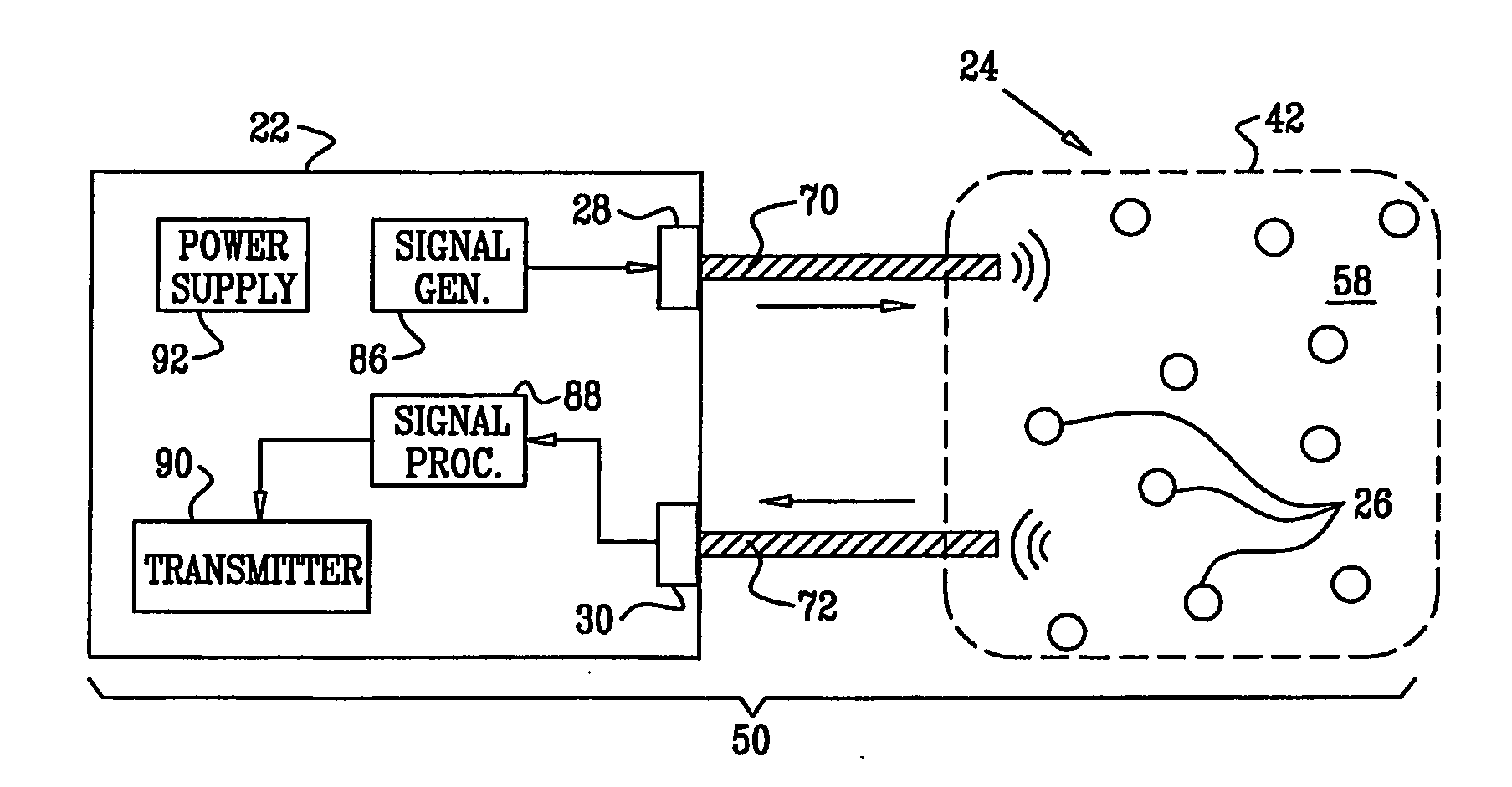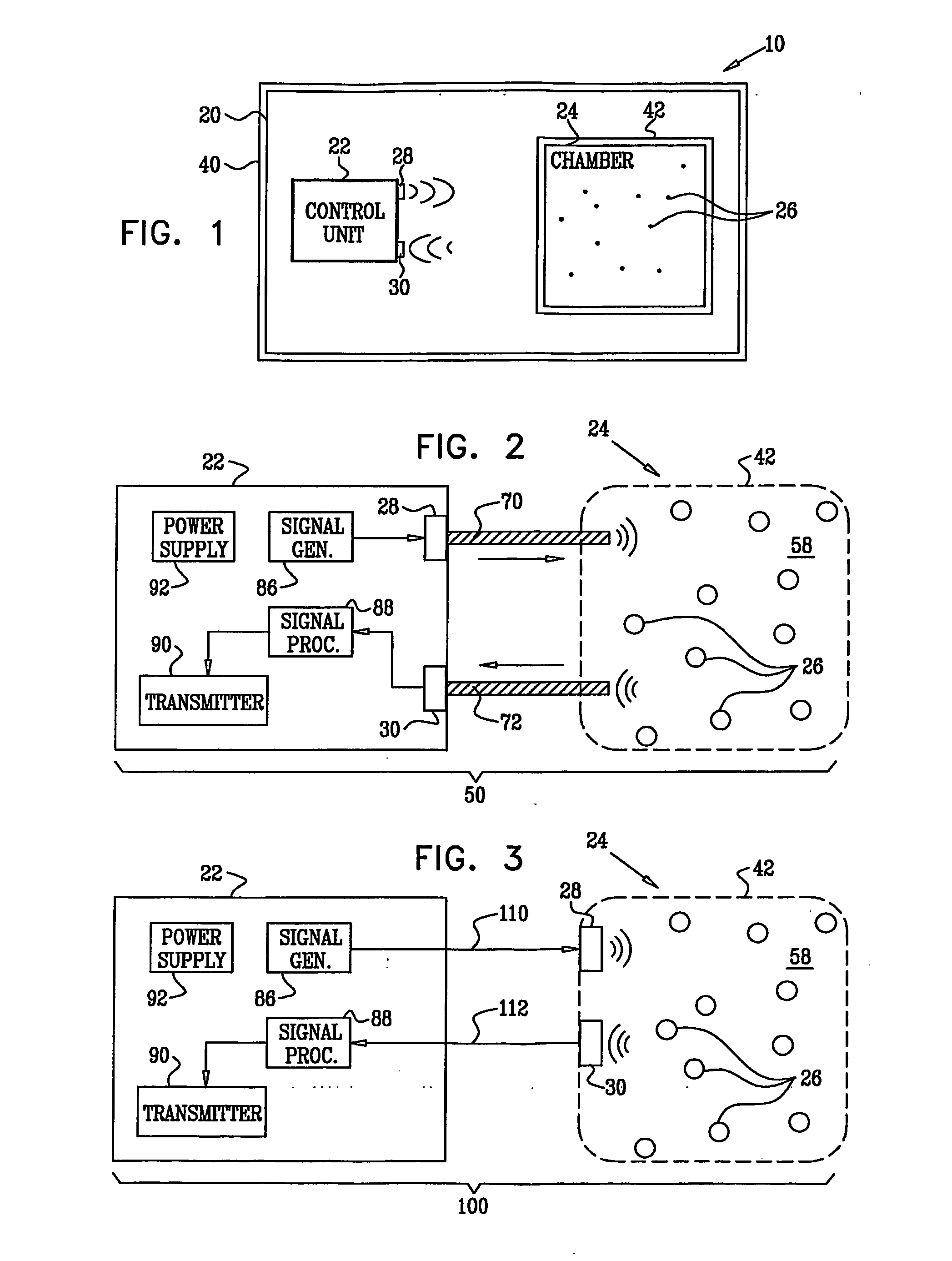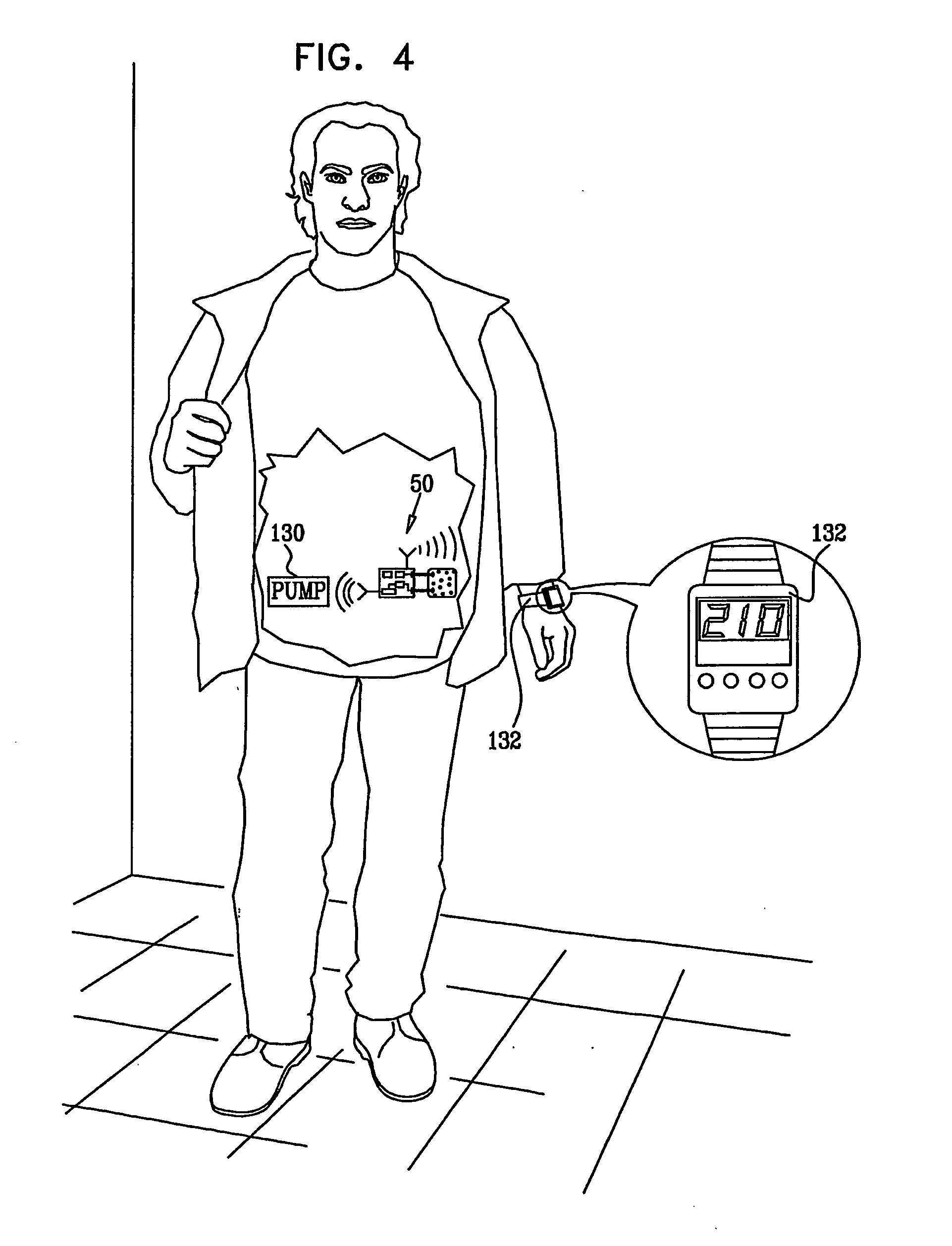Implantable Sensor
- Summary
- Abstract
- Description
- Claims
- Application Information
AI Technical Summary
Benefits of technology
Problems solved by technology
Method used
Image
Examples
Embodiment Construction
[0141]FIG. 1 is a schematic illustration of an implantable device 10 for detecting a concentration of an analyte in a subject, such as a blood constituent or other body fluid constituent of the subject, in accordance with an embodiment of the present invention. Device 10 comprises an implantable housing 20 that holds a control unit 22 and cells 26. For some applications, no housing is provided. Control unit 22 comprises a light source 28, such as a laser or an LED, and an optical detector 30, which may comprise a CCD or other suitable detector. Cells 26 are genetically engineered to produce, in a patient's body, sensor proteins comprising a fluorescent protein donor, a fluorescent protein acceptor, and a binding protein for the analyte. As appropriate, the sensor proteins may generally reside in the cytoplasm of cells 26 and / or may be targeted to reside on the cell membranes of cells 26, and / or may be secreted by cells 26 into a chamber 24. The sensor proteins are configured such th...
PUM
| Property | Measurement | Unit |
|---|---|---|
| Length | aaaaa | aaaaa |
| Concentration | aaaaa | aaaaa |
| Resonance energy | aaaaa | aaaaa |
Abstract
Description
Claims
Application Information
 Login to View More
Login to View More - R&D
- Intellectual Property
- Life Sciences
- Materials
- Tech Scout
- Unparalleled Data Quality
- Higher Quality Content
- 60% Fewer Hallucinations
Browse by: Latest US Patents, China's latest patents, Technical Efficacy Thesaurus, Application Domain, Technology Topic, Popular Technical Reports.
© 2025 PatSnap. All rights reserved.Legal|Privacy policy|Modern Slavery Act Transparency Statement|Sitemap|About US| Contact US: help@patsnap.com



